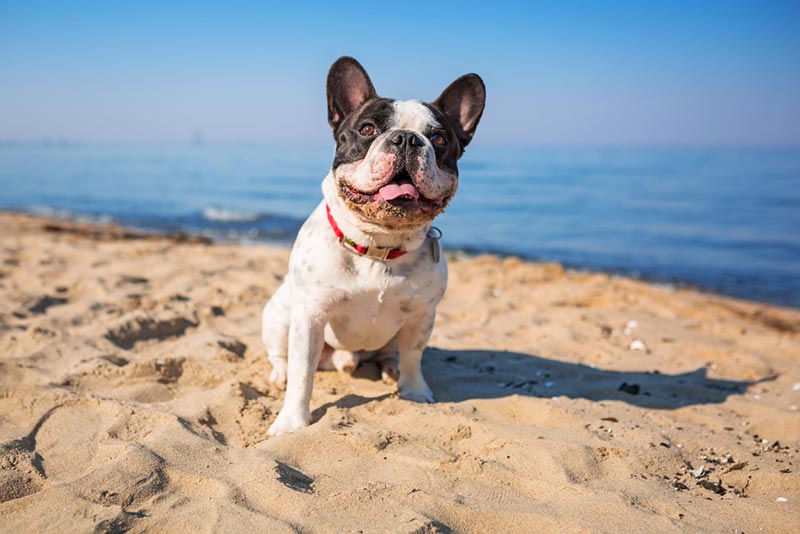Soft-Coated Wheaten Terrier Size & Growth Chart
Updated on
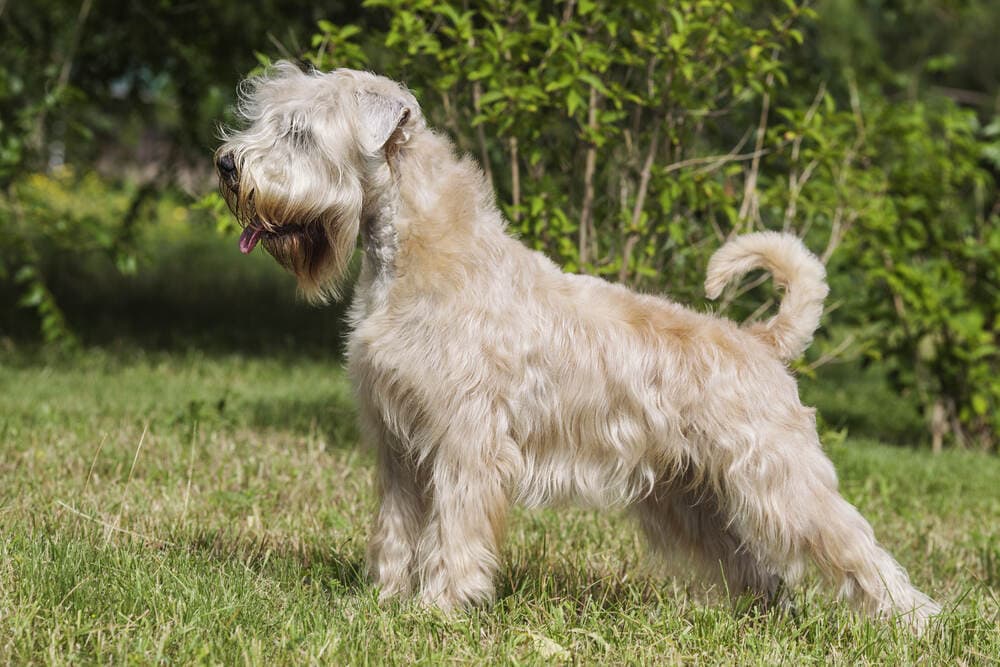
Click to Skip Ahead
Although the Soft-Coated Wheaten Terrier may look like they belong on a runway, they actually have strong sporting instincts and are up for any adventure as long as it means that they can run, play, and jump. These hardy dogs have wavy, silky coats of medium length that fall over their eyes. They are well known for their long beards that hang under their rectangular-shaped heads.
Soft-Coated Wheaten Terriers are around 18–19 inches tall and can weigh around 40 pounds. However, their diet, health, genetics, and care can also play a role in how big they get. Keep reading to learn what you can do to ensure that they reach their healthy adult weight.
Soft-Coated Wheaten Terrier Breed Overview
The Soft-Coated Wheaten Terrier is an Irish terrier that was bred for farm life but excels at just about everything they do, including herding, guarding, catching vermin, and locating and retrieving game. These dogs are native to Ireland and have been around for two centuries, but the AKC only recognized them as an official dog breed in 1973.
Soft-Coated Wheaten Terriers are wonderful family dogs that tend to get along well with children and other large pets if they have been raised with them. However, they are full of energy, making them a bit of a hazard around young children, so supervision is necessary.
Due to their terrier instinct and high prey drive, they shouldn’t be walked off the leash or left to interact with smaller pets, such as birds, reptiles, or rodents. They’re an intelligent breed that always needs something to do. To prevent boredom and frustration, you must include your dog in daily walks, runs, hikes, or swimming activities.
Depending on the severity and sensitivity of a person’s allergy, Soft-Coated Wheaten Terriers are usually a good option for allergic people who want to have a dog because they don’t shed much and are considered hypoallergenic. Although no dog is entirely hypoallergenic, less sensitive allergy sufferers tend to do better with this breed.
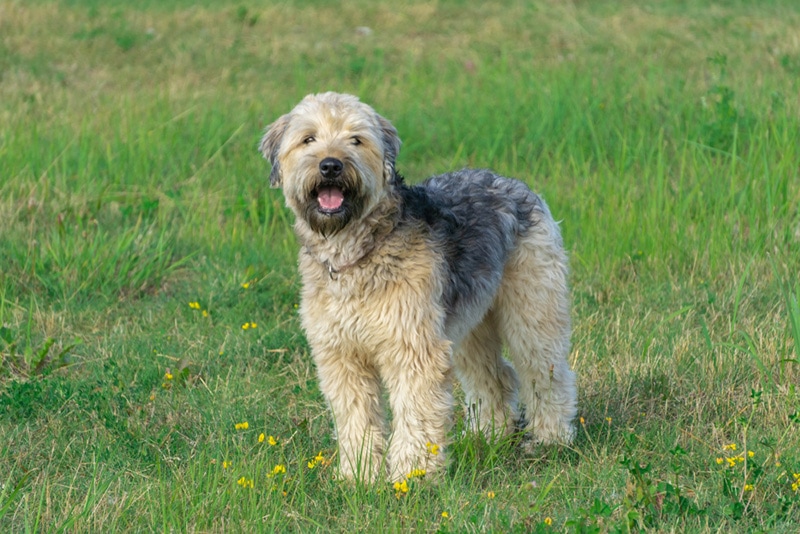
Soft-Coated Wheaten Terrier Size & Growth Chart
Below is a chart of the average weight range that most Soft-Coated Wheaten Terriers will fall into at different ages within the first 60 weeks of their lives. Your Soft-Coated Wheaten Terrier may weigh slightly more or less than the figures listed below, but they’ll more than likely fall close.
However, if your dog weighs significantly more or less than the measurements below, you should chat with your vet. Your dog might be overweight or underweight and may require a diet or lifestyle change to reach a healthier weight.
| Age | Weight Range |
| 12 weeks | 8–10 lbs. |
| 20 weeks | 17–19 lbs. |
| 30 weeks | 25–29 lbs. |
| 40 weeks | 29–35 lbs. |
| 50 weeks | 30–36 lbs. |
| 60 weeks | 32–38 lbs. |
Developmental Milestones of a Soft-Coated Wheaten Terrier
Along with growth milestones come developmental milestones. The first year of your Soft-Coated Wheaten Terrier’s life is full of change and growth, which you’ll notice as they develop physically. It is important to be aware of their different stages so that you can prepare your home with age-appropriate toys, food, and exercise.
- Week 1–3: Your puppy’s eyes and ears will open, and they’ll start to walk and move around. They are still entirely dependent on their mother for warmth and food.
- Week 6–8: Your puppy can be weaned from their mother, and simple training can begin.
- Month 3: Your puppy should have received their vaccinations and preventative treatment for worms and parasites. They are also physically ready to start exercising.
- Month 5–9: Your puppy is an adolescent and may become more challenging.
- Month 9: Your puppy has reached sexual maturity.
- Month 12: Your dog can start eating adult food as they step into the early stage of adulthood.

When Does a Soft-Coated Wheaten Terrier Stop Growing?
It may feel like your Soft-Coated Wheaten Terrier went from a puppy to a full-sized dog in the blink of an eye, but it typically takes around 6 to 8 months. Within the first half of their first year of life, this breed grows quickly in height and weight. However, their growth is much slower and less noticeable in the second half of that year, as you can see from the chart above, gaining only a few more pounds and not much height.
By 12 months of age, Soft-Coated Wheaten Terriers usually stop growing and have reached their full size. However, this breed may only reach full maturity by 30 months and is known to be full of energy for many years, only showing signs of slowing down from the age of 7. With the right care, exercise, and diet, these dogs can live to be around 15 years old.
Factors Affecting the Size of a Soft-Coated Wheaten Terrier
Although Soft-Coated Wheaten Terriers usually weigh around 35–40 pounds and reach a height of 19 inches, the breed can vary in size. There are a few factors that can affect the size of your dog:
Gender
Male Soft-Coated Wheaten Terriers are typically bigger and heavier than female Soft-Coated Wheaten Terriers. It is common among most breeds for the male to be bigger than their female counterparts, whether large or small.
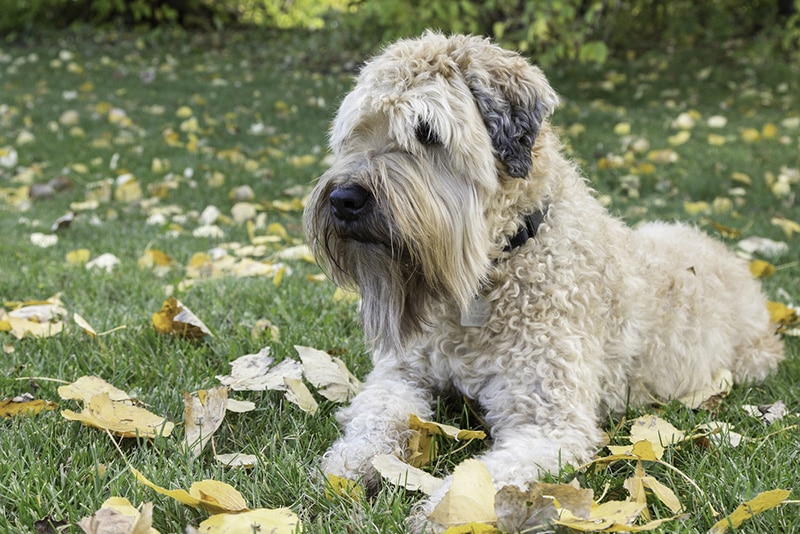
Genetics
If your Soft-Coated Wheaten Terrier’s parents were above average in size, it’s likely that your dog will be, too, as genetics plays a big role in the size of a dog.
Neutering
If your Soft-Coated Wheaten Terrier is neutered before the age of one, their growth rate might be affected slightly. However, this is usually more evident in large breeds.
Diet
Good quality dog food that is nutritious and breed-appropriate can have an effect on your dog’s size because those who don’t get the nutrition they need may not develop at the same rate as those who eat a well-balanced diet. Dogs that are given too much food may become obese and weigh more, whereas those with a poor diet or who undereat will weigh less.
Exercise
Dogs that are exercised regularly will be in good shape, develop faster, and have healthier bones and more muscle. They are less likely to be overweight and develop health issues.
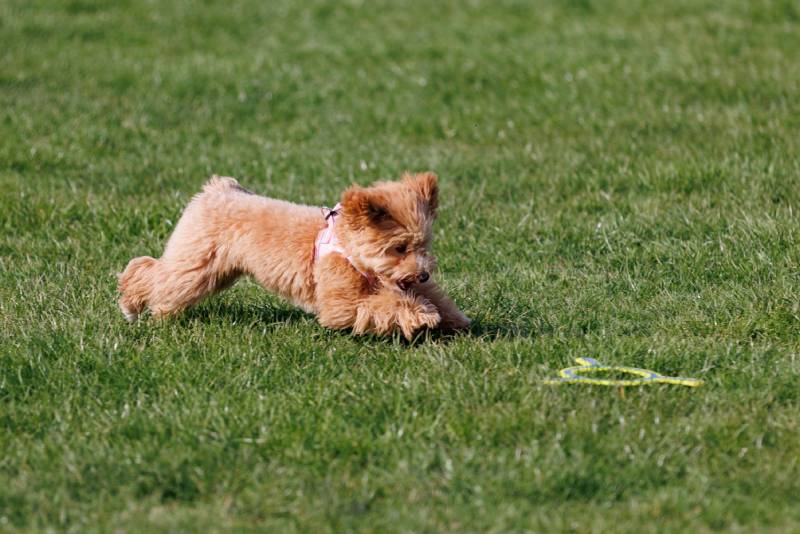
Ideal Diet for Maintaining a Healthy Weight
Soft-Coated Wheaten Terriers are active and need a diet that includes animal protein, carbohydrates, and fats. There are many good quality dog foods that are packed with nutritious ingredients. The type of dog food you give them is up to you, with the most common forms of dog food being fresh, kibble, dehydrated, or freeze-dried.
Make sure to give your Soft-Coated Wheaten Terrier the recommended amount of food to avoid over or underfeeding.
How to Measure Your Soft-Coated Wheaten Terrier
You can measure your dog a few different ways, but the most accurate one would be to use a dog scale. If you don’t have one of those, you can use your own scale. First, stand on the scale and weigh yourself. Then, weigh yourself again while holding your dog in your arms. To find out your dog’s weight, you’ll need to subtract your first measurement from the second.
To measure your dog’s height, you’ll use a measuring tape to measure from the highest point of a dog’s shoulder blades, which are called the withers, right down to the ground. Most people think the height of a dog is measured from the top of their head, but this isn’t the standard.
Conclusion
Soft-Coated Wheaten Terriers are around 18–19 inches tall and can weigh around 40 pounds, although it is common for them to weigh less, especially if they are female. These dogs are excellent family dogs that love to get involved with all the activities. However, they’re not great around young children or small pets due to their high energy and prey drive.
A good quality, nutritious diet is one of the factors that will ensure that your dog develops well and reaches a healthy weight and size. However, genetics, gender, neutering, and exercise all have a role to play, too.
See Also:
- Are Soft Coated Wheaten Terriers Hypoallergenic? Vet-Reviewed Facts
- 10 Wheaten Terrier Haircuts & Grooming Styles (With Pictures)
Featured Image Credit: TatyanaPanova, Shutterstock




